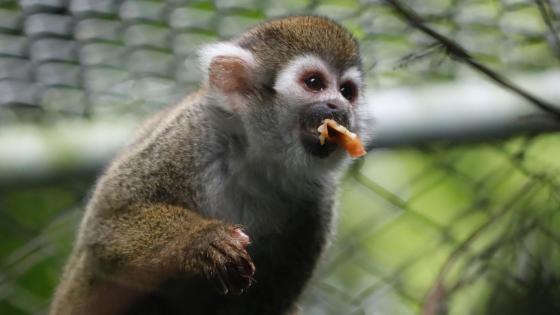In an operation of the Regional Autonomous Corporation of Valle del Cauca (CVC) with the help of the Prosecutor’s Office, the Police and the Army, the animals were rescued on February 17.
That day they were transferred to the San Emigdio Wildlife Care and Valuation Center, a 14-hectare sanctuary where 23 professionals are in charge of caring for them so that they recover their health.
SERIOUS HEALTH PROBLEMS
According to the general director of the CVC, Marco Antonio Suárez Gutiérrez, the animals are in a 90-day quarantine period with a special diet.
“They arrived very badly, with nutrition problems and various factors that sadden us; 102 of them are night monkeys and 6 are squirrel monkeys that, one month after their recovery, already show improvements,” Suárez told EFE.
The official added that in San Emigdio “Habitats have been adapted for this type of monkeys that allow detection of diseases in quarantine and allow an accurate evaluation of the state of health. During this period, preventive and curative medicine protocols are applied as the case may be.”
Suárez specifies that the animals “they will not be returned in any way to their former holders”although it confirms that the organizations that had them locked up have filed two protection actions to try to recover the primates.
“Fortunately, the authorities have ruled in favor of our corporation. We will not allow more mistreatment of animals,” he points out.
RETURN TO FREEDOM
The biologist Alexandra Duque, who works with the CVC at the San Emigdio care center, points out that the primates have gone through several processes seeking to recover habits and adapt to natural conditions.
The spaces are surrounded by vegetation typical of the tropical dry forest and they feed on barley, seeds, worms and various proteins that they find in the wild.
“Despite all the efforts, it is not the same as seeing them walk in their natural space. If people understood the suffering that an animal in captivity has to go through, they would let them go free.”ad”, explains the biologist to EFE.
After stabilizing them, and when the 90 days have passed, the authorities will indicate if the monkeys are ready to be released into the wild or if they will be relocated to other institutions.
A census of those who may have died or of those who have had to be euthanized due to their critical condition will also be delivered.
This wildlife care center has cared for more than 5,200 animals of various species that have been victims of trafficking, mistreatment or abuse by humans.
In addition, they have been released 1,661 of these individuals in their natural habitats after arduous recovery processes. Many of them are taken by the Air Force to different regions of Colombia.
“Wildlife are not pets and the best gift we can give them is to admire them in freedom, please don’t hurt them anymore”concluded the director of the CVC.
EFE Agency Information*
